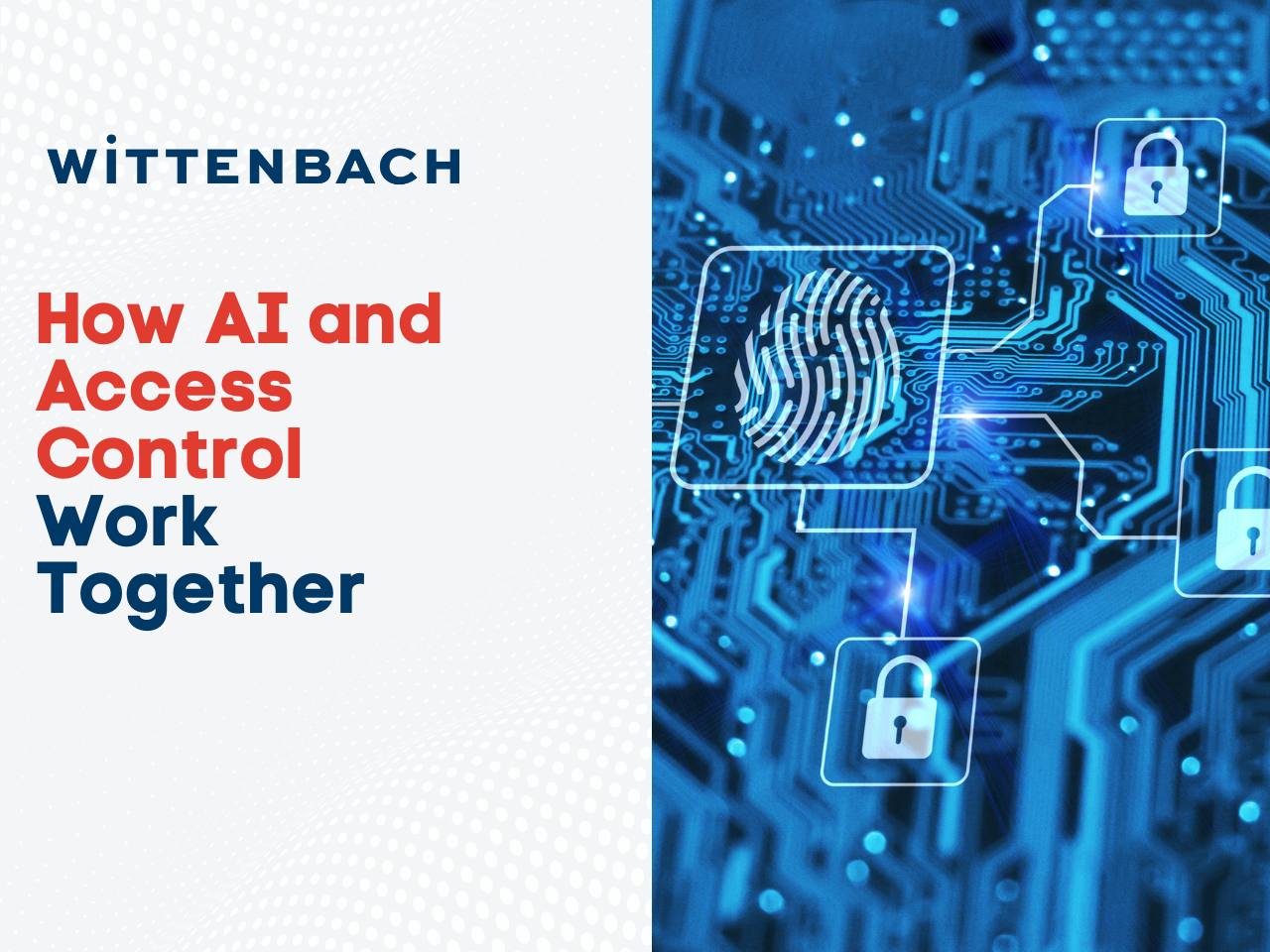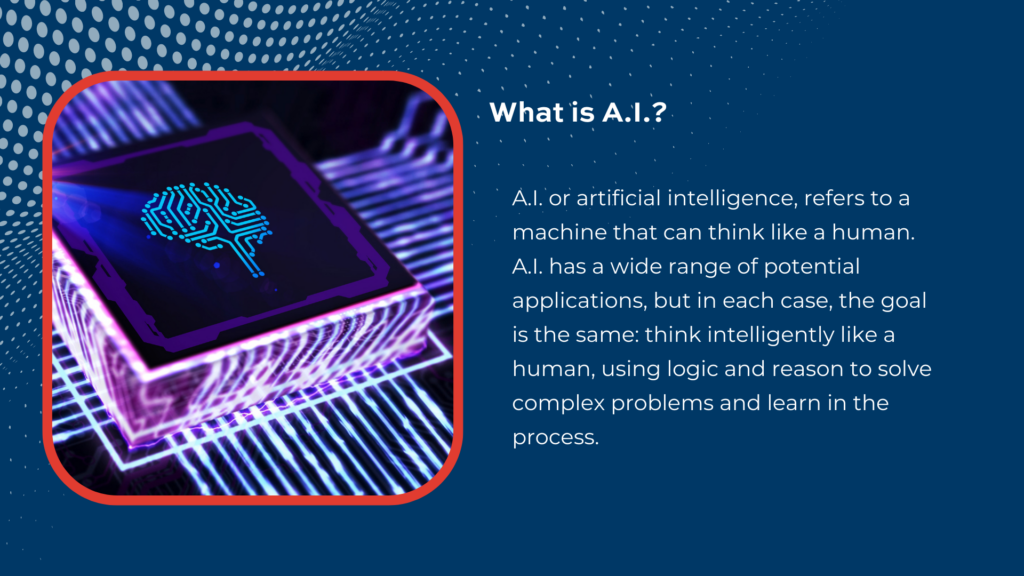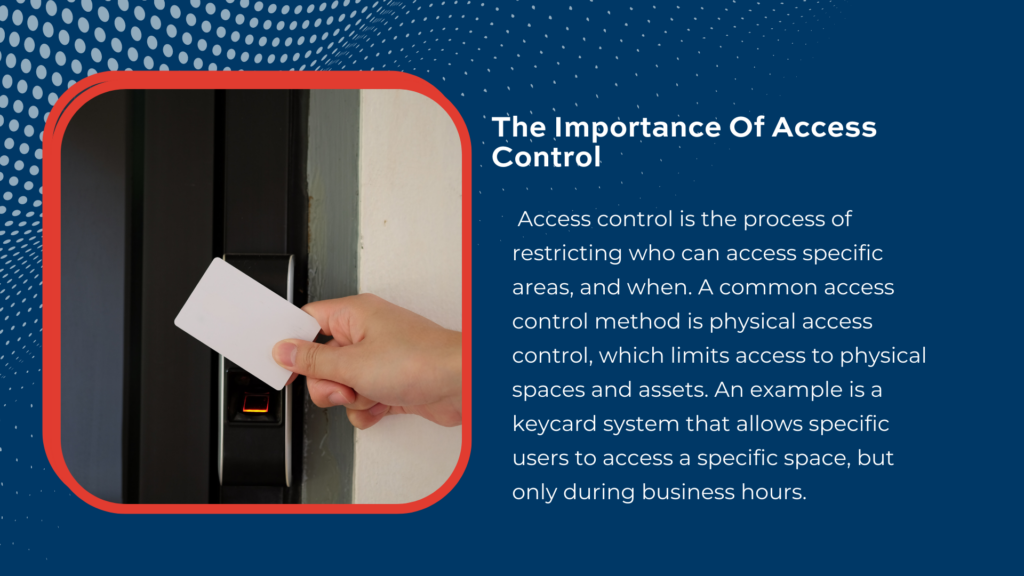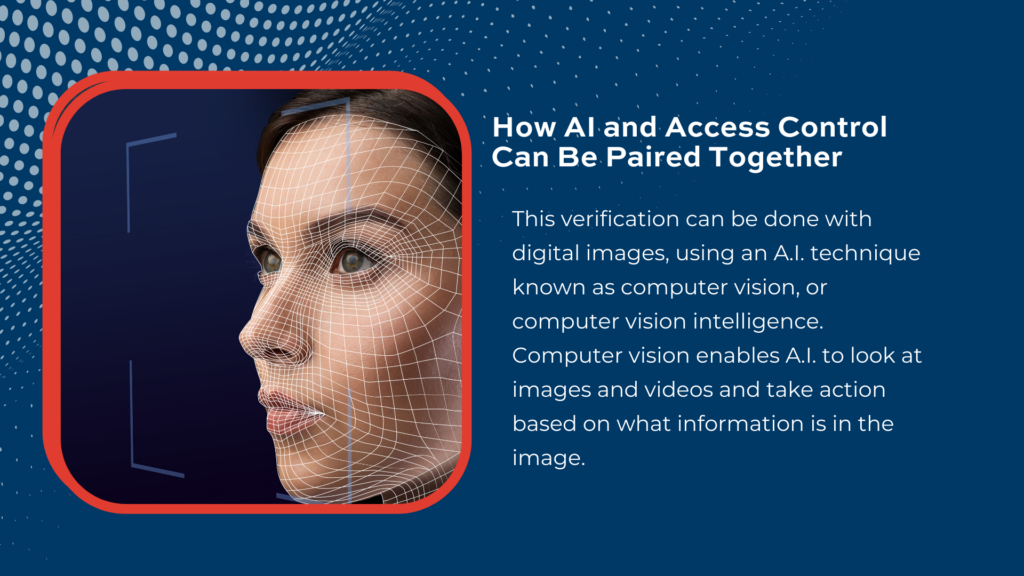It would be an understatement to say there’s been some buzz about A.I., artificial intelligence. It has been one of the hottest, most buzz-worthy tech trends in recent memory.
From the media coverage around OpenAI’s artificial intelligence chatbot, ChatGPT, and its competitors, to the machine learning used in autonomous or driverless vehicles, the lines between science fiction and future fact have seemed increasingly blurred.
However, there is a big gap in how A.I. is portrayed in the media and what A.I. actually is. While the tech isn’t 100% there just yet, A.I. can (and will) play an important role in nearly every facet of our lives. These high-profile examples may be generating the most publicity, but they are far from the only use cases of A.I. technology.
For security solutions, that means A.I. will work together with existing protocols such as access control, in helping to keep valuable assets secure and protecting financial institutions and their customers.
What does A.I. have to do with security solutions such as access control? To begin, we have to understand what A.I. really is.
What is A.I.?
A.I. is a very broad term that’s often misused. So what exactly is A.I.?
A.I. or artificial intelligence, refers to a machine that can think like a human. A.I. has a wide range of potential applications, but in each case, the goal is the same: think intelligently like a human, using logic and reason to solve complex problems and learn in the process.
By contrast, machine learning or M.L., is an application of A.I. Machine learning consists of teaching a machine how to perform a specific task, identifying patterns, and eventually providing more and more accurate results over time. Machine learning uses statistics and data to self-correct, but it’s not thinking on its own.
Machine learning and A.I. have often been used together. They may be used for predictive maintenance in manufacturing, or to forecast demand of a product in the supply chain.
A.I. and machine learning are already in use in the financial industry. Currently, they are used for tasks such as predicting financial trends, fraud detection, automating trades (also known as algorithmic trading), and as A.I. assistant chatbots.
While artificial intelligence and machine learning are different, pop culture and science fiction often use A.I. or artificial intelligence for any kind of advanced computing, even if it’s not technically A.I., hence the confusion.
The Importance Of Access Control
Now we will shift focus to access control. Access control is the process of restricting who can access specific areas, and when. A common access control method is physical access control, which limits access to physical spaces and assets. An example is a keycard system that allows specific users to access a specific space, but only during business hours. Logical access control is a method that limits access to computer networks and data.
Access control is still a great security measure, and there’s a reason why it should be a key component of your overall security profile. Why? Access control works. There are multiple reasons for implementing proper access control measures for any business. Be it prevention to tracking to monitoring entry to certain facilities, properties or locations, effective access control systems ensure your assets, employees, and customers are protected. Access control can be an affordable solution that acts as a powerful preventative measure against security threats.
Of course, access control is only one key component of a comprehensive security and monitoring solution, so pair it with other solutions such as alarm monitoring.
How AI and Access Control Can Be Paired Together
A big advantage of A.I. for electronic security is that it allows security professionals to move from a reactive to a proactive approach, in which threats are automatically detected.
According to a report from the Urban Institute, “False alarms from security systems generally are caused by faulty installation, overly sensitive or faulty components, inadequate maintenance, or faulty user behavior.”
Avoiding false alarms is essential to preventing fines from local governments, as well as preventing an unnecessary police response and holding up the dispatcher queue since alarms are considered a third priority.
Traditionally, when a threat is identified, a human needs to verify if the threat is legitimate or not. Multiple this threat by multiple threats a day, times multiple locations, times 24 hours a day, 365 days a year, and you can see how quickly the amount of human effort that would be required to verify each and every threat over the course of a single year. However, A.I. can recognize patterns and also detect threats. For example, a door held open slightly longer than usual, while a possible tailgating indicator, does not always mean tailgating is happening. A.I. could be used to detect and verify whether this was a threat.
This verification can be done with digital images, using an A.I. technique known as computer vision, or computer vision intelligence. Computer vision enables A.I. to look at images and videos and take action based on what information is in the image.
A.I. also allows for the detection of anomalies in users’ behavior. A user who accesses the workplace regularly Monday-Friday, 9 am – 5 pm may not raise any red flags. However, that same user accessing the workplace after hours or on a holiday is an anomaly that could be flagged by A.I.
There are even more benefits of using A.I. for access control. Pairing the two together can allow you to quickly enable or revoke privileges for new or former employees. Facial recognition software can enable quick, easy access for your employees while negating the need for a physical keycard, which can easily be lost or stolen. Or you could combine facial recognition with a physical keycard requirement, making your access points require MFA, multi-factor authentication.
The Future of Security Solutions
As A.I. and similar technologies advance, expect to see them used more often in security solutions and services such as access control. Instead of replacing these solutions, expect to see this new technology integrated into existing methodologies.
Along with access control systems, you can keep your financial institution even safer with Wittenbach’s additional physical security offerings, such as safes, and electronic security solutions, including intrusion alarms and surveillance camera systems. You can learn more about Access Control by downloading our free, E-Guide, by clicking here. Not sure which security solutions you need? Contact us and let our experts help you find the right solutions.




